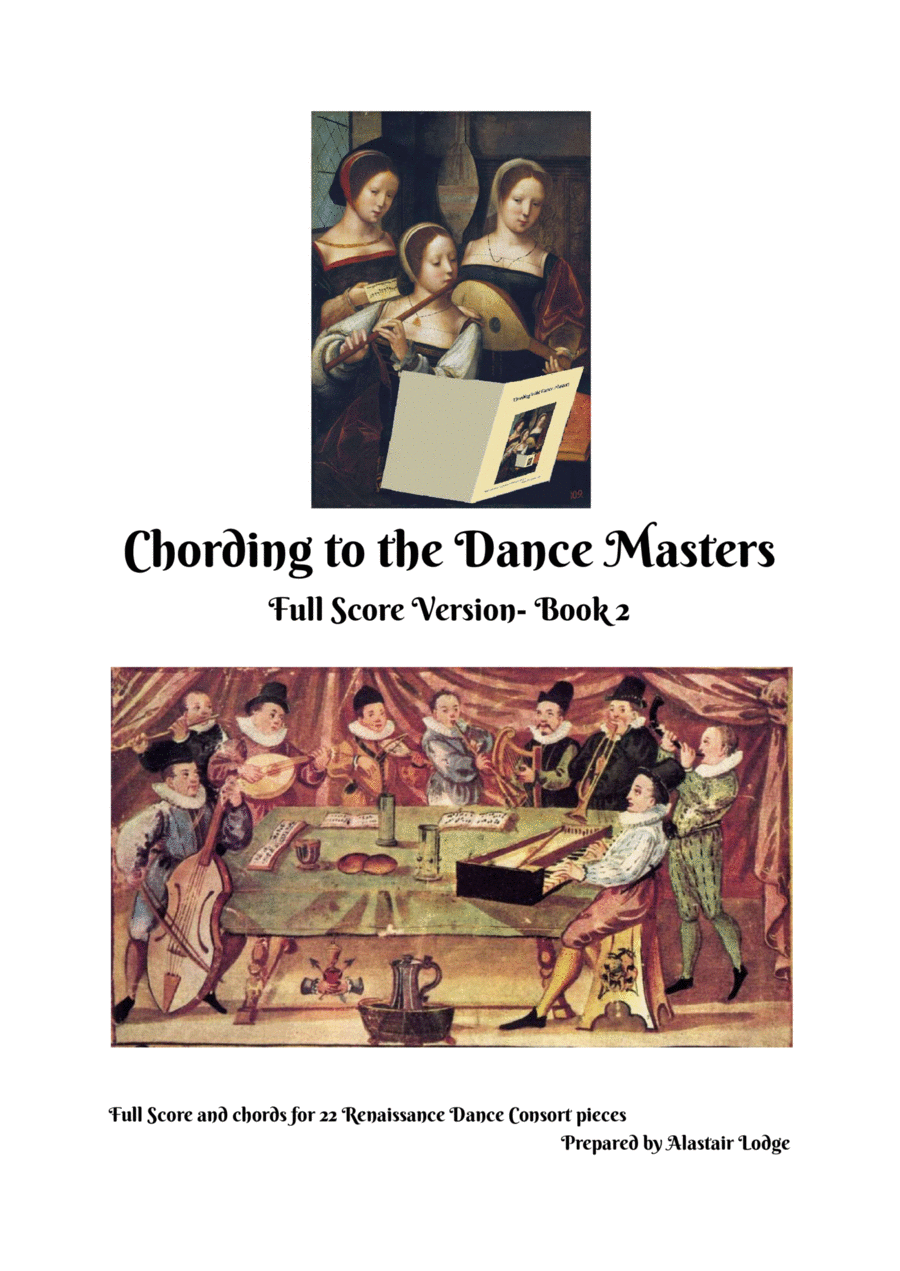Level 3 - Digital Download SKU: A0.1133721 By Various. By Anonymous, Claude Gervaise, Claudin de Sermisy, Erasmus Widmann, Giorgio Mainerio, Henry VIII, Juan Del Encina, Michael Praetorius, Pierre Attaignant, Pierre Phalese, Thoinot Arbeau, Tielman Susato, and William Cornysh. Arranged by Alastair Lodge. Early Music,Folk,Historic,Medieval,Renaissance. 50 pages. Wold Meridian #733832. Published by Wold Meridian (A0.1133721). This is a companion to my earlier volume Chording to the Dance Masters which presented 44 of my favourite Renaissance Dance band tunes and arranged them as a single melody line with chords derived from the original harmony lines. In this volume I have reunited 22 of the pieces with the lower parts in the score, so that with more collaborators, the fullness of the original arrangement can be heard. The chords are still present, so if the ensemble is short handed, and lines are missing, the arrangements will still work. What is more, by contrasting the melody and chords with the full scoring, it should be possible to work some light and shade into performances.  You can hear all the pieces and their chords on YouTube together with contemporary art and historical background material:https://youtube.com/playlist?list=PLYRWH2nycMkMoIoEYEMVPa_EXY6NVDpNSAs a help to those less confident in playing harmony lines, I have provided links to playlists of videos online for each part of each piece. You will hear the selected line on its own with chords and percussion, with the melody line added on repeats. The final repeat includes the other harmony lines, but the featured line is slightly louder in the mix. The performance starts with a percussion beat introduction to set the tempo.Who were the Publishers and the Dance Masters? What did they do? Sometime around the 1500s, the popularity of dance music exploded in Europe. Dance Masters were collecting chansons and dance tunes from courts and rural parts and were teaching these to new audiences, spreading their arrangements and reflecting the performance styles of the areas from which they had collected the tunes. Publishers were able to take these tunes that were becoming known across the regions and nations and spread them even more widely, thanks to technological innovations in music printing which made it quicker and therefore cheaper to produce collections of these dances in four or more parts. These publishers were often highly accomplished composers in their own right, who were both able to provide distinctive harmony lines and compose new tunes in the style of their sources, feeding the courts with enduring tunes. Composers and printers of this time would often use note values that are double the length of those we would be used to seeing today, and so to make this version more readable, breves have become semibreves or whole notes, semibreves have become minims or half notes and so on. Working with this publication For those just starting out in Early Music, the volume is an ideal introduction, since the ensemble can build from a soloist with accompaniment with the chords alone, and parts can be added in as additional musicians become available. Instrumentation for these pieces was not specified in the original prints. The range of each part is quite limited, and though the harmonies may seem strange at times, key signatures are kind to the less experienced musician. If enthusiasm takes hold, then reproductions of early music instruments are sold by some very talented makers, as well as coming up on auction sites. Otherwise, it is possible to put together a fairly convincing ensemble with recorders, violins, a cello and mandolins, bouzoukis, flutes or guitars and gradually introduce the authentic instruments as they become available.
